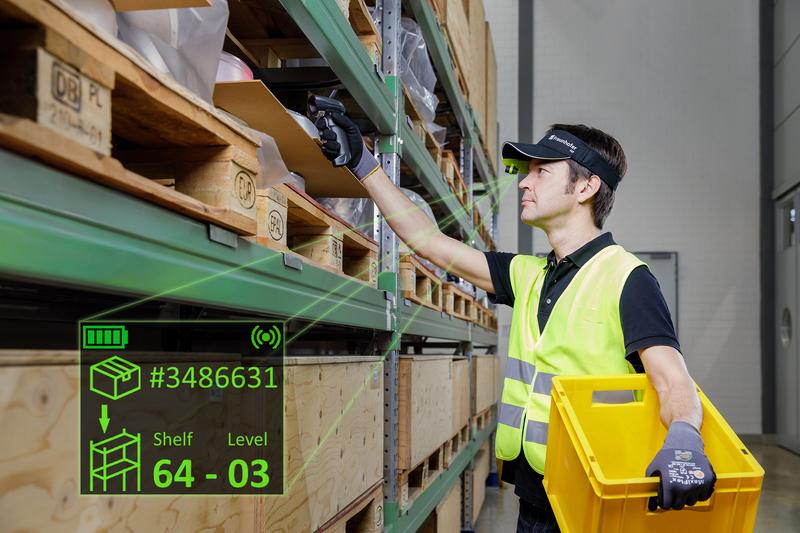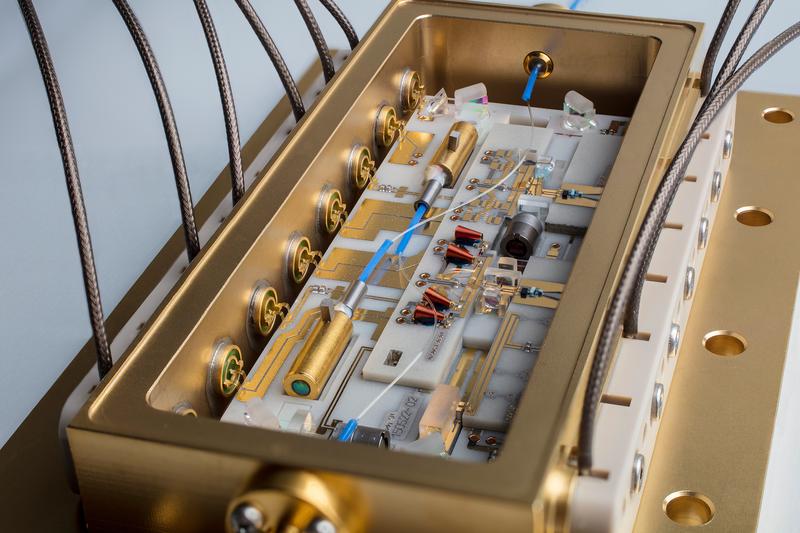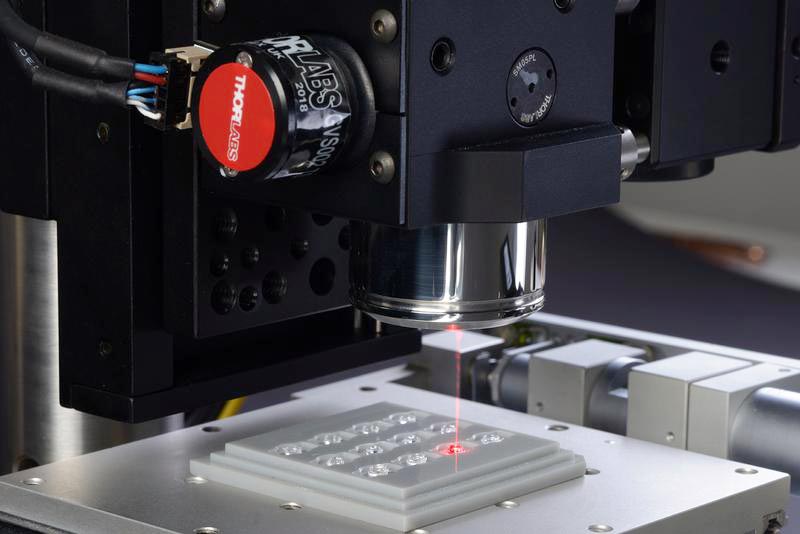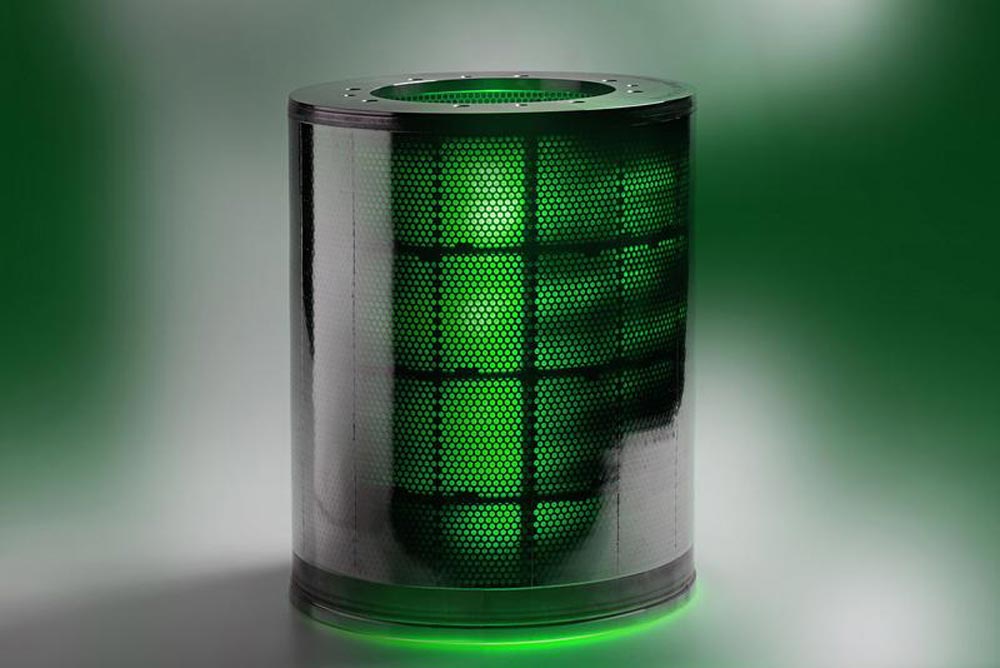

Application of the ultra-low-power OLED microdisplay in stock management
© Fraunhofer FEP, photographer Claudia Jacquemin
The Fraunhofer FEP presented the first ultra-low-power OLED microdisplays two years ago at electronica 2016. These microdisplays score thanks to their extremely power efficient concept and provide great possibilities to display razor-sharp information in many areas of application.
Contrary to the current trend of increasing resolutions of HD+ and higher and higher framerates, the FEP scientists continued to stick to their low-power approach, found the right design, and have been rewarded.
In the meantime, a well-known European display manufacturer became aware of this in-house development at Fraunhofer and is now mass-producing and marketing it. This is a prime example of Fraunhofer's application-oriented research – the ultra-low-power OLED microdisplays could be successfully transferred into production and thus brought to market.
But a display alone does not make an AR app! The scientists of the Department IC and System Design at the Fraunhofer FEP have now developed the electronics and the display to bring them simply and fast into real applications. A display element by itself is not enough.
The communication by the display with other interfaces and systems is the key to applications. A variety of inquiries, ideas, and application scenarios can be addressed with the microdisplay solution and its unique advantages.
The extremely small size of the ultra-low-power OLED microdisplay is perfect for miniaturized and lightweight systems that are portable and easy to integrate into clothing, helmets, and glasses. The OLED technology of the display provides sharp images with extremely high contrast and brightness, ranging from 20 to 5,000 nits (monochrome green).
Interested developers can now choose from three different display variants: displays with 304 × 128 pixels with 12 µm² pixel size and 4-bit grayscale, 304 × 256 pixels with 12 µm² pixel size and 4-bit grayscale, and 720 × 256 pixels with 5 µm² pixel size and 1-bit black-and-white image.
The ultra-low-power electronics concept addresses applications for harsh environments such as disaster management, for example, but also for industry and telemedicine, where long battery runtime without interruption for re-charging is indispensable. These requirements are met by the ultra-low-power characteristics.
However, a display lives from the information that a data source sends and that are to be displayed. The ultra-low-power concept is not about high-resolution video data at the highest frame rates, but instead about the display of simple characters, data, or information that are transmitted as commands with low latency. In the event of a major fire with a large number of emergency personnel, for example, the control center can use helmet integrated displays to quickly send precise and easy-to-understand instructions to the firefighters on site. By integrating a display into the helmet, the display could also function in areas with low visibility due to smoke.
The Fraunhofer FEP's innovative Bluetooth kit lays the foundations for augmented reality developments – such as a data helmet for emergency personnel or a worker in an Industry 4.0 setting – without long re-charging times.
The ultra-low-power design benefits from the low data transfer rate it uses. It was therefore logical to implement information transmission via Bluetooth Low Energy (BLE), since this technology consumes very little battery power. In principle, however, the connection to narrow-band low-power radio data networks such as the Narrow-Band Internet of Things (NB-IoT) and LoRaWAN (long-range wide-area network) are also conceivable.
Philipp Wartenberg, head of the Department IC and System Design at Fraunhofer FEP, explains: “We offer our industrial partners a complete system concept for controlling ultra-low-power OLED microdisplays over a universal Bluetooth connection.
This enables direct and wireless communication with the display out-of-the-box from various input devices such as smartphones, laptops, and wristbands.“ The vision of the developers: In the near future everyone could have a suitable microdisplay for their desired application that could be easily programmed by themselves.
Besides the display, the development kits contain everything required, from the optics up to the graphical user interface (GUI) for Windows or Android devices. The kits are tools for product developers as well as app developers to test their ideas in a simple and easier way and to play with the technology. These developers can also target the market for data glasses, which is predicted to grow by over 200 % between now and 2020.
But the system platform from Fraunhofer FEP offers advantages not only for data glasses. The Internet of Things is an enormous market for smart sensors and devices that communicate with each other and generate data that ultimately needs to be presented at a user interface. The ultra-low-power OLED microdisplay and the Bluetooth system platform together provide a powerful development tool for mobile devices of the future.
The Fraunhofer FEP scientists will present the new generation of displays with various application scenarios at electronica 2018, November 13-16, 2018 in Munich, Germany at the Fraunhofer Joint Booth (no. 426/Hall C5). The new electronics development with different application scenarios can be tested live on site and discussed with the developers.
Fraunhofer FEP at electronica 2018
November 13-16, 2018 in Munich, Germany
Fraunhofer Joint Booth (No. 426, Hall C5)
Talks
Wednesday, 14. November 2018,
10:05 – 10:30 a.m.: 2018FLEX Europe – Be Flexible
Title: “SmartEEs – Accelerating the uptake of Flexible Electronics”
03:20 – 03:40 p.m.: OE-A Seminar “Thin – Lightweight – Flexible: Organic and Printed
Electronics for the Individualized Mass Market“
Title: “Flexible OLED Lighting – Opportunities, Challenges, Solution”
Press contact:
Ms. Annett Arnold
Fraunhofer Institute for Organic Electronics, Electron Beam and Plasma Technology FEP
Phone +49 351 2586 333 | presse@fep.fraunhofer.de
Winterbergstraße 28 | 01277 Dresden | Germany | www.fep.fraunhofer.de












